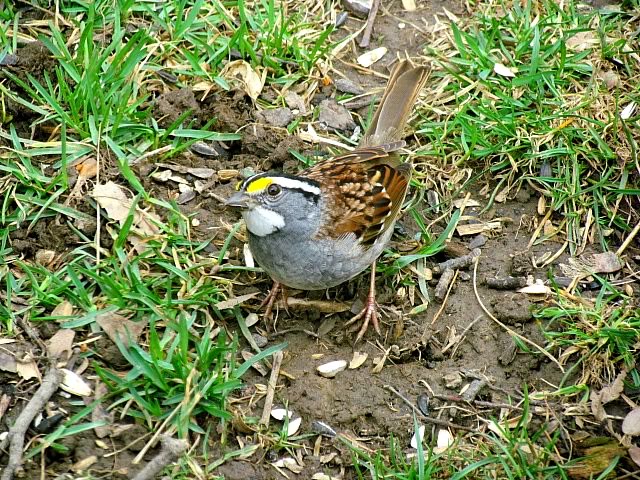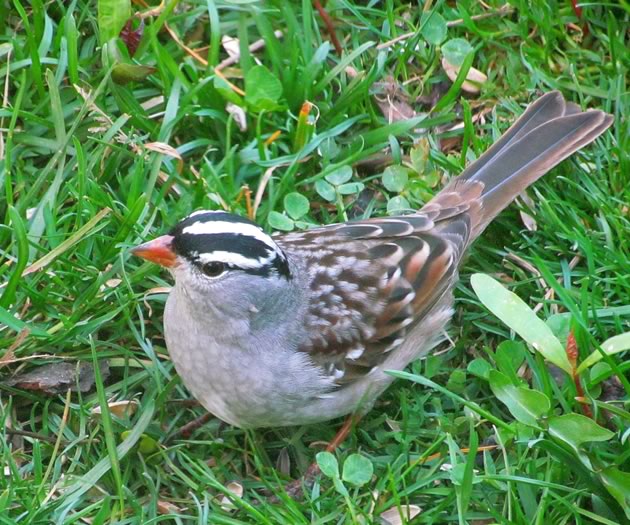Spring Sparrows
Take time to notice the fox, white-crowned and white-throated sparrows.
If thought about at all, most people dismiss sparrows as boring brown birds. It doesn’t help that the sparrow people know the best is the house sparrow, an introduced species that lives cheek by beak with us in urban settings.
House sparrows would be an unlikely poet’s muse. They are noisy, aggressive birds that stuff messy nests into any available opening. Their voice could be charitably described as discordant.
But please look beyond the pedestrian house sparrow to our dapper, refined native sparrows. And listen to them as well – some of our fifteen or so natives sing arias that pull on the heartstrings.
Now is the time to see three of these lovely native sparrows – fox, white-crowned and white-throated – as they visit bird feeders. The fox and white crowned are en route to Canada’s far north.
Most of the white-throated sparrows are northward bound as well, but some will stay in Headwaters country where pockets of mixed conifer-deciduous woodland can be found.
The fox sparrows are imbued with rich maroon and sienna colours. They don’t appear at my feeders every spring, but when they do, I rejoice.
White-crowned sparrows are more frequent visitors. Their cameo appearances allow me to reacquaint myself with their beauty. Brilliant white patches on their heads are bordered and partitioned by sharply delineated black. Their breasts, shoulders and faces are washed with silver.
Of these three itinerant sparrows, the white-throated are the most regular feeder visitors. They too are attractive birds, with caps similar to the white-crowned, but boasting bibs of white as well. And the eyes of many white-throated sparrows are crested by brilliant yellow patches.
That the white-throats sing their ethereal “Sweet Canada, Canada” during their feeding stopovers is an added bonus – an achingly beautiful evocation of the north woods, here in the domesticated south.














